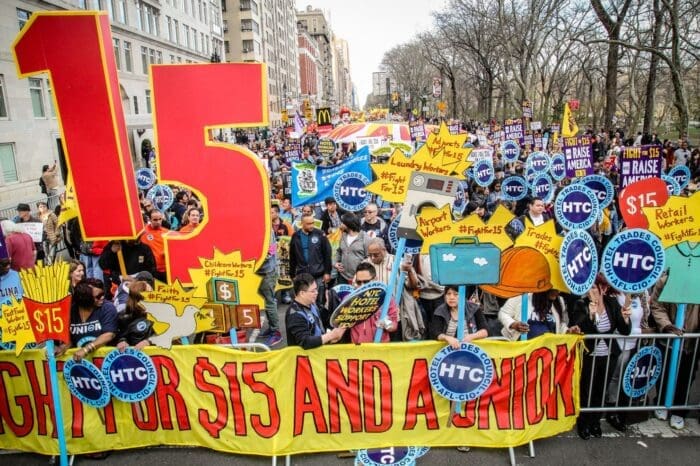Increases in the state minimum wage boosted the earnings of Black workers by $5,100 annually on average, and increases in the local minimum wage raised their earnings by $7,300.

I sat down with NELP’s Senior Researcher and Policy Analyst, Yannet Lathrop, to learn what has worked and what’s next for the movement:
Q: Through this movement, are there any trends about which states have reduced the racial wealth gap? What is the landscape in RF’s priority states: Florida, Alabama, Missouri, and New Mexico?
A: We did not estimate the movement’s equity impacts by state. But we found that between 2013 and 2019, the Black-white wealth gap decreased by 40.3 percentage points in states that raised their minimum wages, and the Latinx-white wealth gap decreased by 29.4 percentage points. In states that adopted minimum wages of $15 or more, the racial wealth gap decreased faster: the Black-white wealth gap narrowed by 54.3 percentage points, and the Latinx-white wealth gap by 48.0 percentage points. Florida, Missouri, and New Mexico are among the states that adopted higher wages during the period analyzed; while Alabama neglected to raise its wage floor and adopted a minimum wage preemption law to invalidate Birmingham’s adoption of a local wage floor in 2016. Recently, SEIU—which has backed the Fight for $15—announced a new initiative to unionize workers in the South. Hopefully, this new effort will mean higher wages for underpaid workers in the region and, with time, a narrowing of the racial wealth gap.
Q: How did the campaign land on this slogan? How can narrative change impact the success of a campaign like the Fight for $15?
A: I think it’s fair to say that the organizers of the Fight for $15 have mastered narrative change through the slogan and strategy (worker actions) they adopted. In 2012, when the Fight for $15 began, the movement hadn’t yet settled on a single name. It was variously referred as Fast Food Forward, Strike Fast Food, and Fight for $15 and a Union. The latter won because the name embodied the movement’s demand (a $15 hourly wage, which at the time was a living wage for a single adult), and the conditions (a “fight”) under which it could win that demand. The name, Fight for $15, was also more welcoming of other underpaid workers—since it did not imply that the movement was limited to the fast-food sector—broadening its appeal. The name also evoked worker agency and alluded to the potential for power building, which, like a virtuous cycle, led to more workers exercising their agency and building power together. All of that has been key to the movement’s success.
Q: Knowing the campaign started 10 years ago, should $15 still be the goal today? What’s next for the movement?
A: While a $15 minimum wage may have been a living wage for single adults in some parts of the country back in 2012, it is no longer as robust a wage. After a decade (including two years of high inflation), a $15 wage has lost approximately 20 percent of its value. Though a $15 minimum wage is still an important benchmark today—and winnable in more conservative states, such as Nebraska—there is increasing recognition that the new demand must be higher. New campaigns are doing just that: in Hawaii, workers won an $18 by 2028 minimum wage earlier this year; Californians will get to vote for an $18 minimum wage in the 2024 elections; New Yorkers are demanding a $21-plus minimum wage; Tukwila, Washington just adopted one of the highest minimum wages in the country; and dozens of cities and counties have already adopted wages above $15. My sense is that in the years ahead, the movement will continue to push for wages of around $15 in conservative areas where the cost of living is relatively low, and where a $15 minimum wage is more feasible; and will push for wages above $15 in more progressive areas. And, as the Fight for $15 and SEIU have signaled, the South will be an important target for the movement.